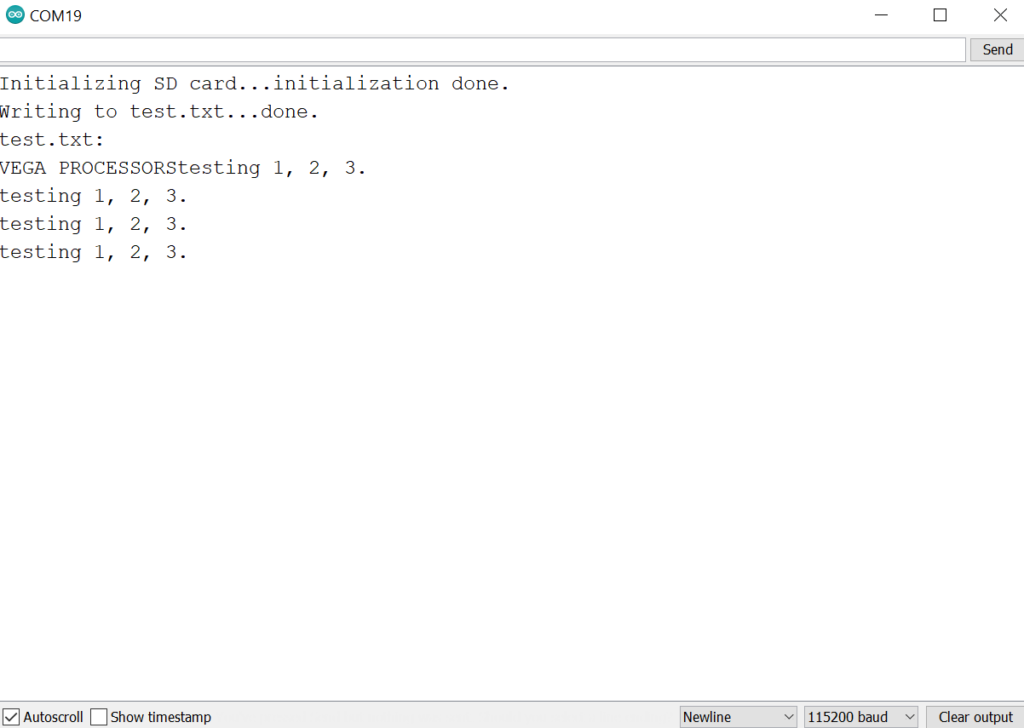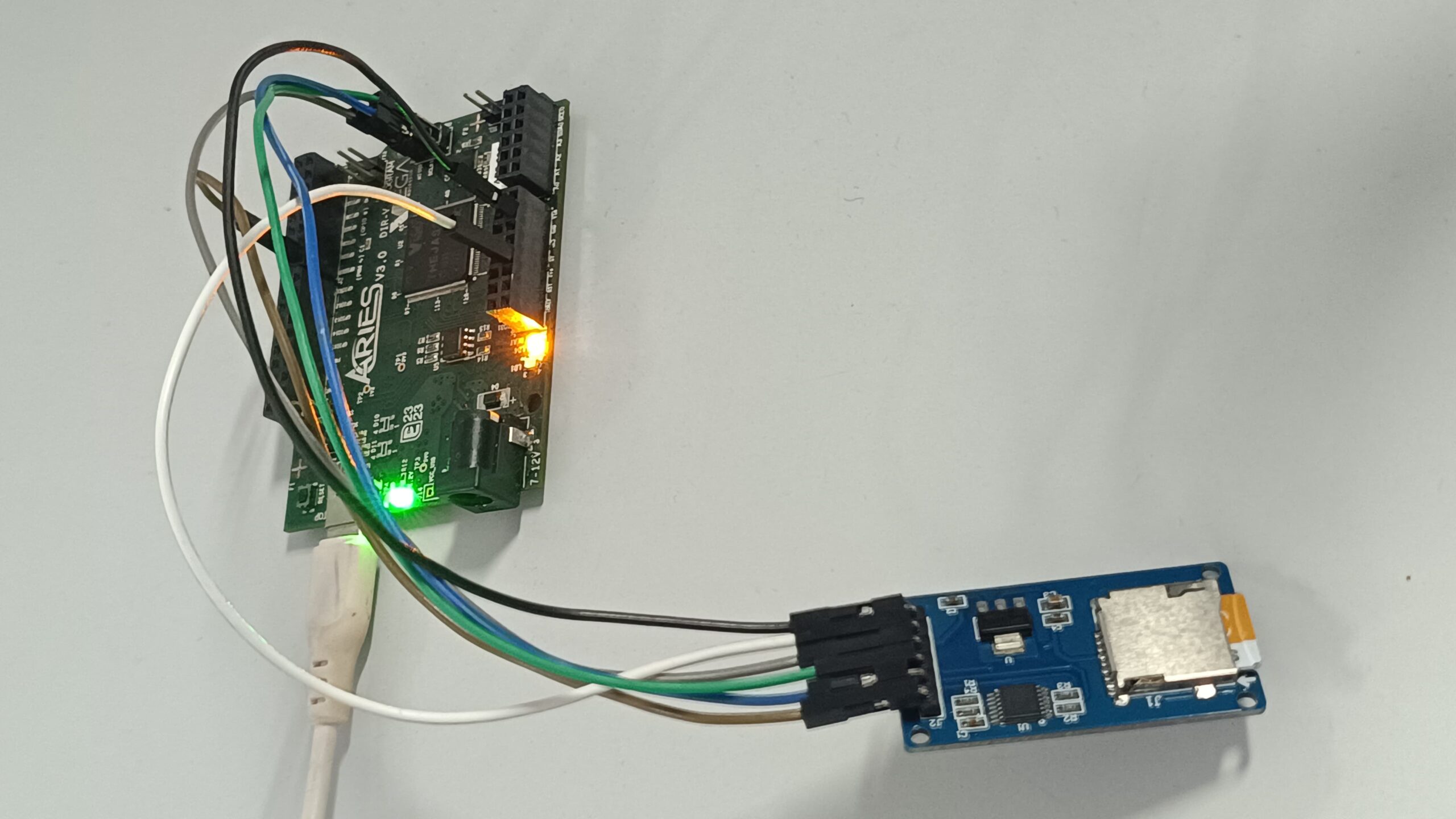In this tutorial we will learn how to interface Micro SD cards with VEGA ARIES v3 boards.This Micro SD Card is used for transferring data to and from a standard SD card. Micro SD Cards allow us to add mass storage and data logging to our project.
Micro SD Card Module
The module (MicroSD Card Adapter) is a Micro SD card reader module and the SPI interface via the file system driver, and microcontroller system to complete the Micro SD card read and write files. Users can directly use the Arduino IDE that comes with an SD card to complete the library card initialization and read-write.
Features
- Input Voltage: 3.3V/5V
- With all SD SPI Pins out :MOSI, SCK, MISO and CS ,for further connection
- Through programming, you can read and write to the SD card using your Arduino
- Make your SD application more easier and simple
- Communicate with Arduino using SPI interface
- Push-pop socket with card slightly over the edge of the PCB so its easy to insert and remove
- 4 mounting holes with 2.2mm diameter
- Only use 4 I/O pins on the Arduino
- Size: 42mm x 25mm x 5mm

Micro SD Card Module

Micro SD Card used for Testing the example
Prerequisites
- Windows 10 or above/Linux (64 bit)
- Arduino IDE
- VEGA ARIES Board support package
Components Required
- ARIES v3.0 Board
- USB type C to USB type A cable
- Micro SD Card Module
- SD Card (Samsung 32GB SD card is used for testing the above example)
- Jumper Wires
Circuit Diagram

Connections:
| Micro SD Card Module | ARIES V3 board |
| GND | GND |
| VCC | 5V |
| MISO | MISO-1 |
| MOSI | MOSI-0 |
| SCK | SCLK-1 |
| CS | GPIO-10 |
Connection pins of Micro SD Card Module & ARIES v3.0 Board
Procedure
Open and set up the Arduino IDE as described in Getting Started with ARIES v3.0.
- Make sure you have selected ARIES v3 Board from Tools -> Board -> VEGA Processor: ARIES Boards -> ARIES v3
- Select Programmer as VEGA XMODEM from Tools -> Programmer -> VEGA XMODEM
- Also select appropriate port from Tools -> Port -> COM* (ARIES Board)
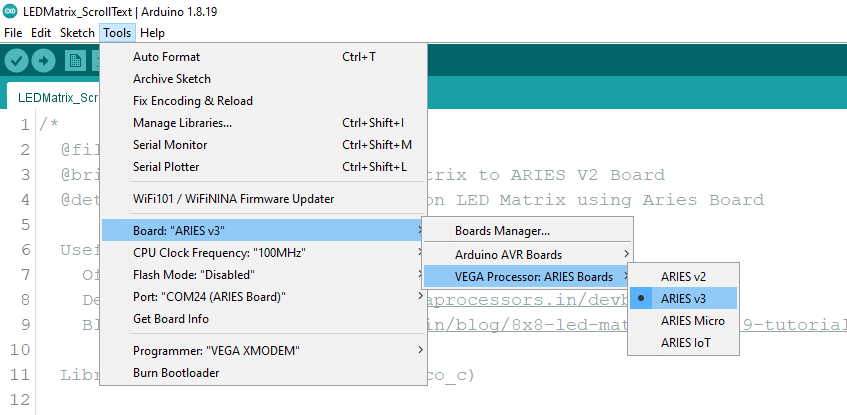
Now, Open Files -> Examples -> Under Examples for ARIES v3 -> SD-> CardInfo
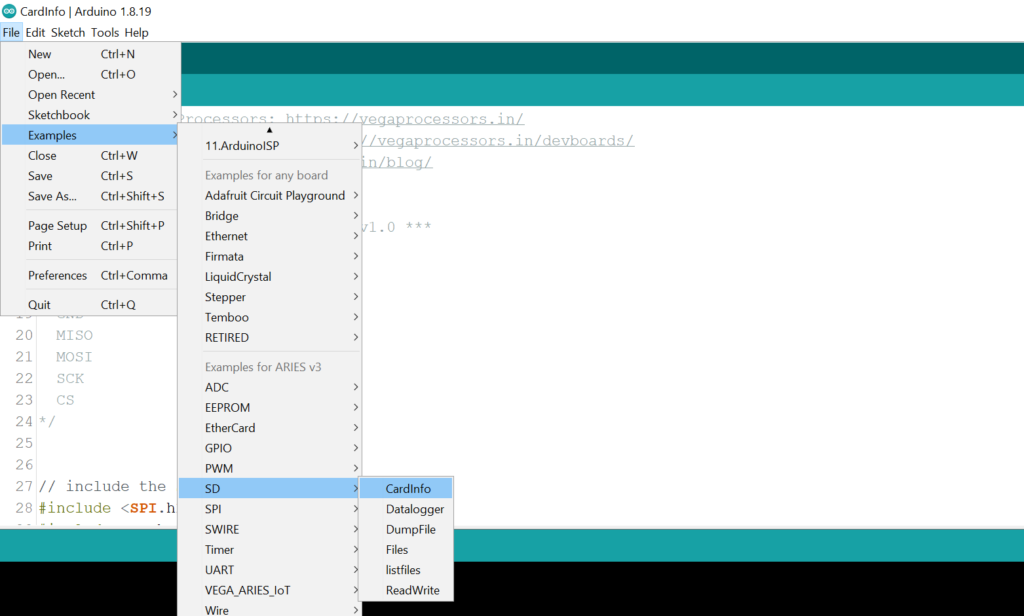
Finally Upload the code to ARIES board.
Output
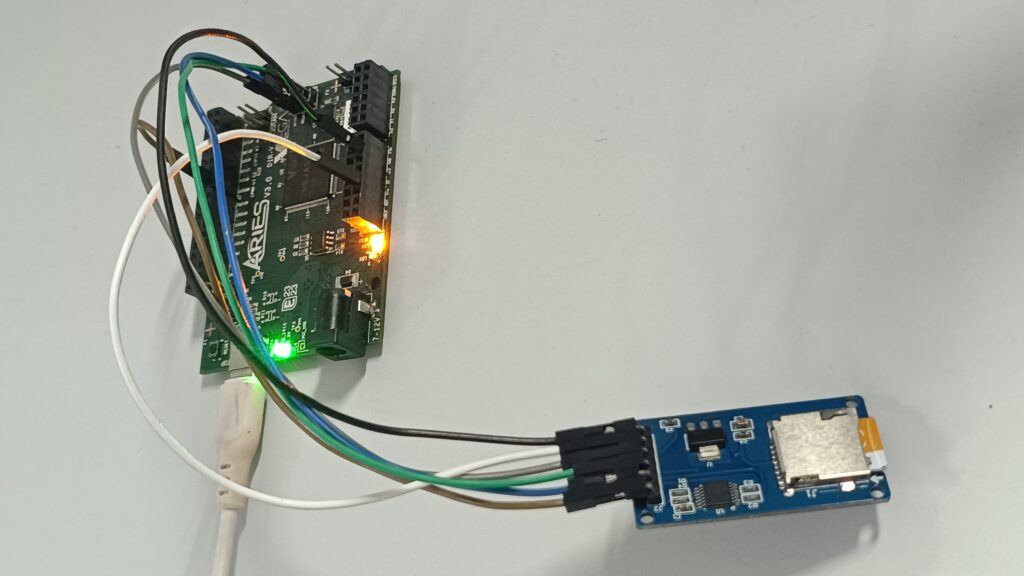
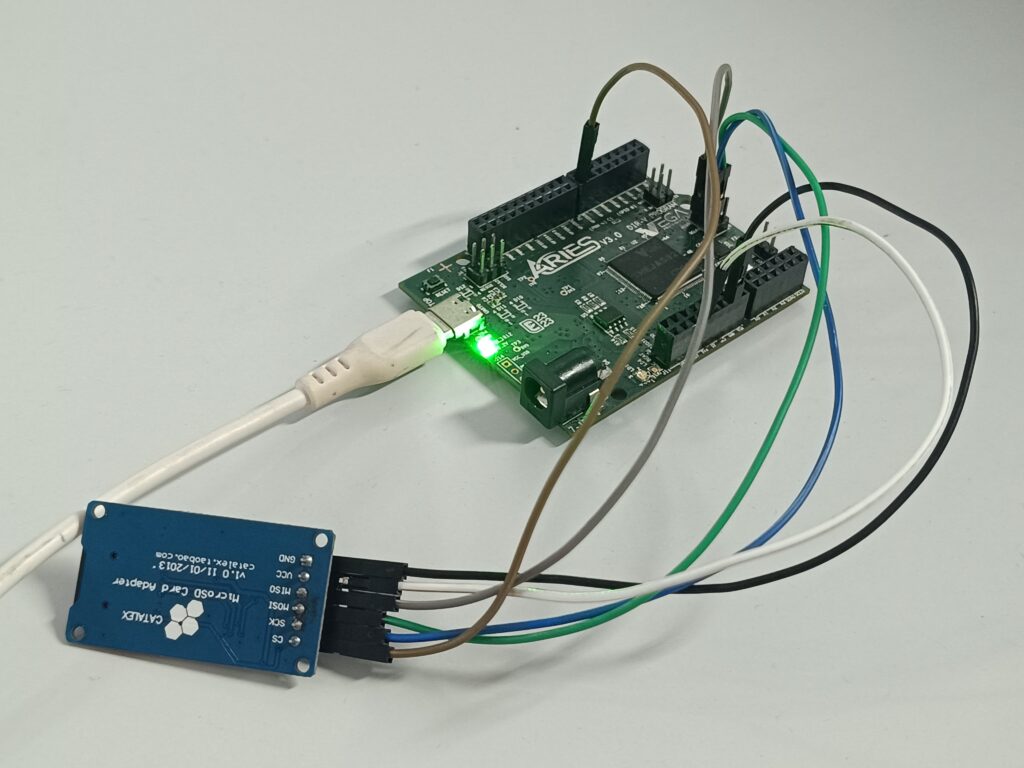
You can find several instances of SD card examples within the SD folder. Experiment with each example separately to observe their respective outputs.
Example 1- CardInfo
This example demonstrates how to utilize the utility libraries that form the foundation of the SD library to obtain information about your SD card. It is particularly valuable for testing a card when uncertainty exists regarding its functionality.
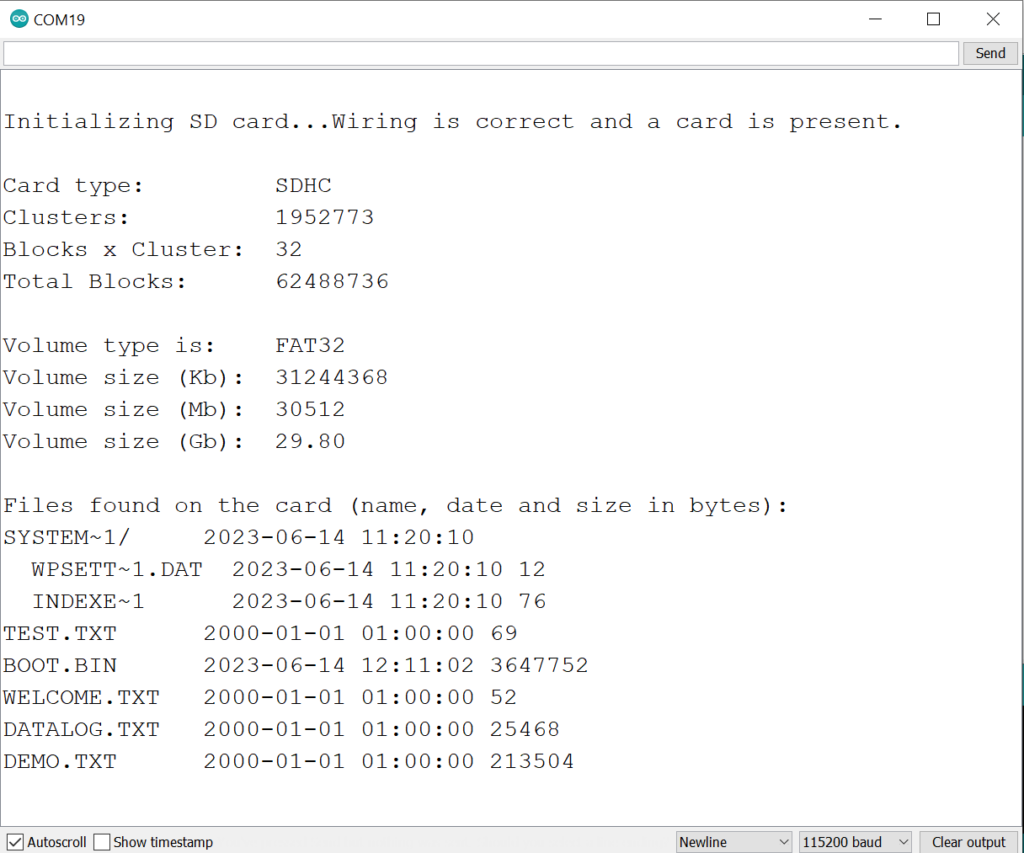
Example 2 – Datalogger
This illustration demonstrates the process of recording data from three analog sensors onto an SD card by leveraging the capabilities of the SD library.
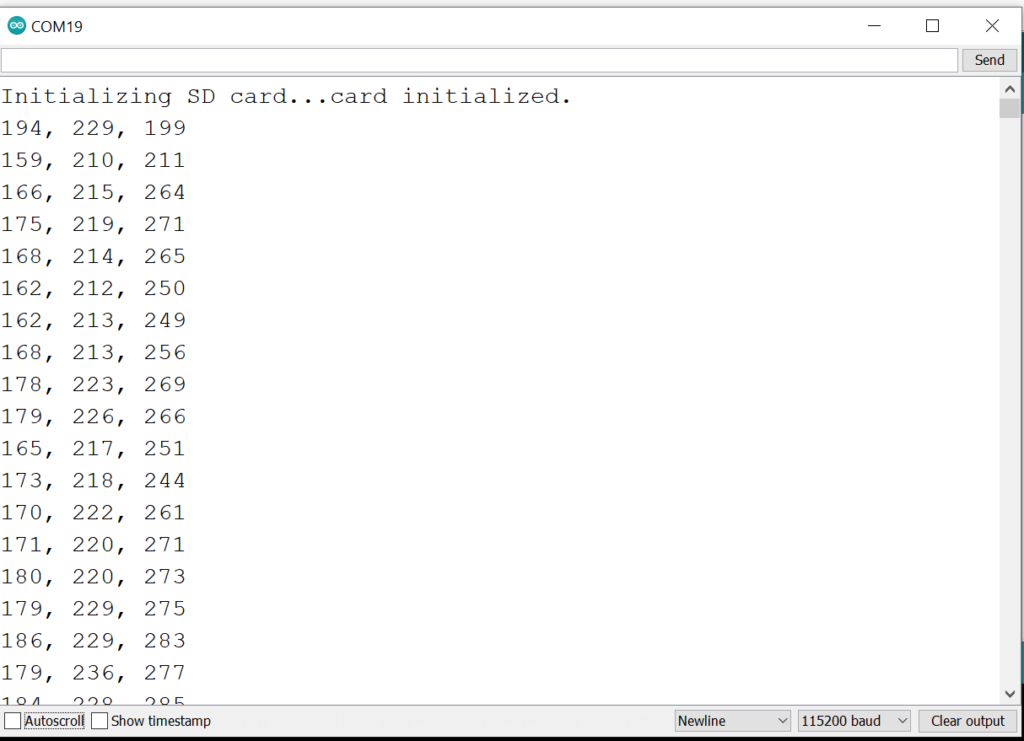
Example 3 – DumpFile
This example illustrates the procedure for reading a file from the SD card through the SD library and transmitting it via the serial port.
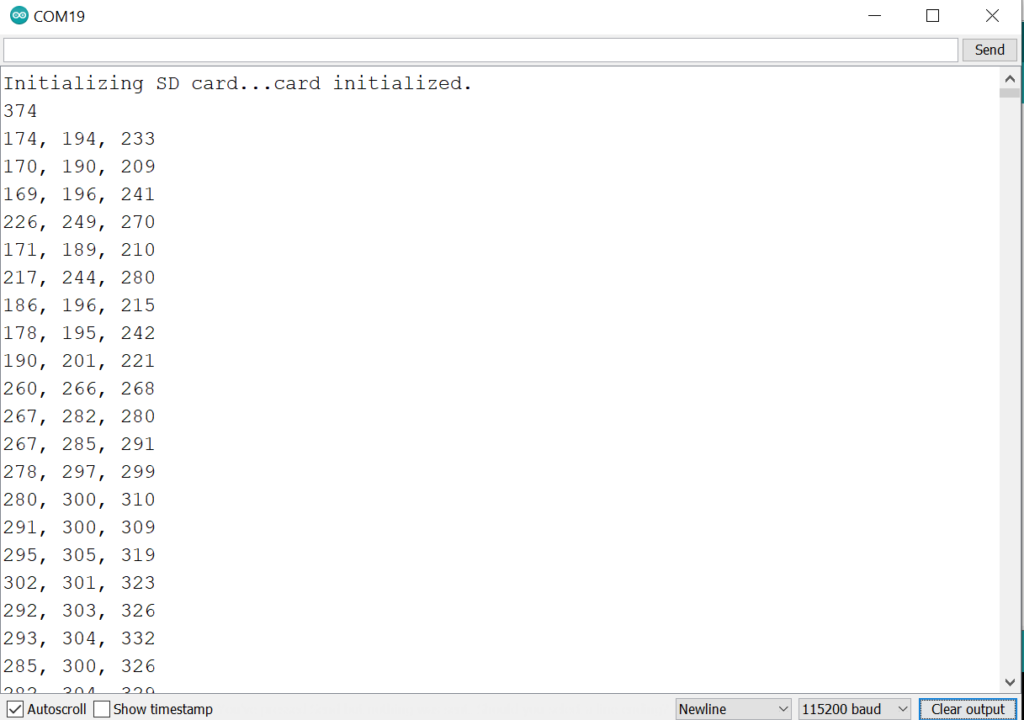
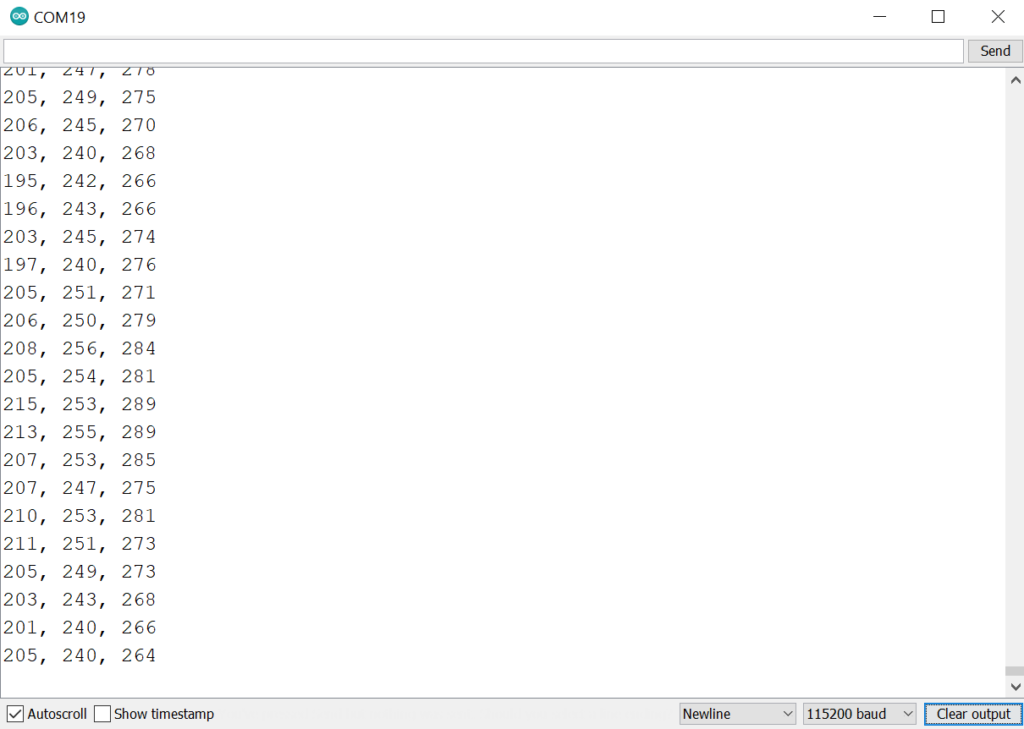
Example 4 – Files
This example demonstrates the steps involved in both creating and deleting a file on an SD card.
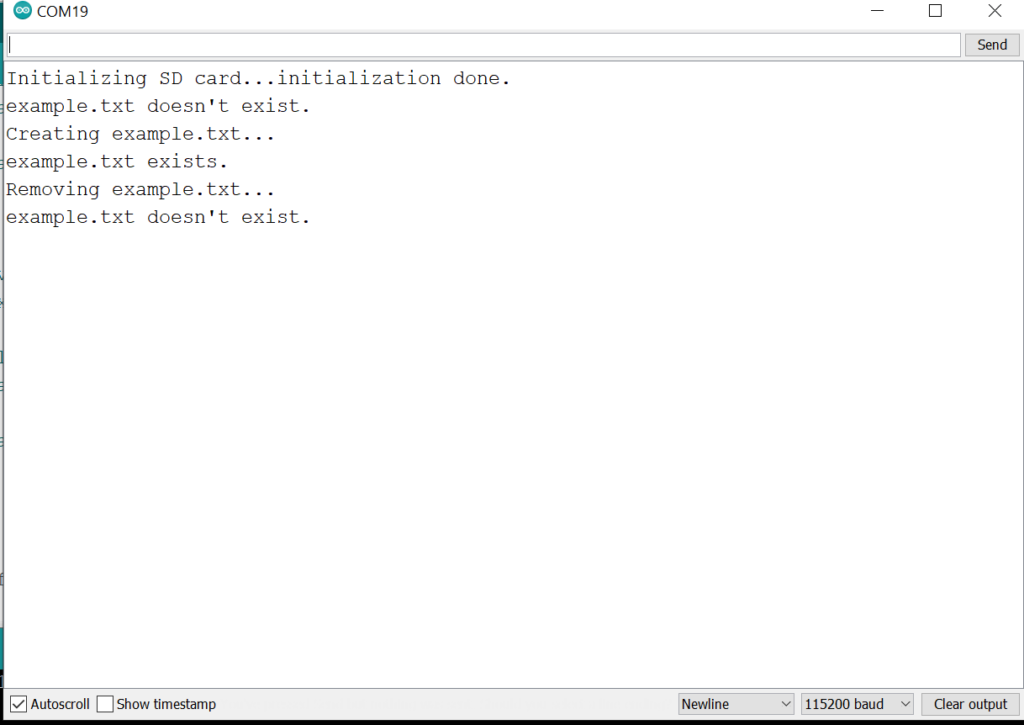
Example 5 – Listfiles
This example illustrates how to print the list of files in a directory on an SD card.
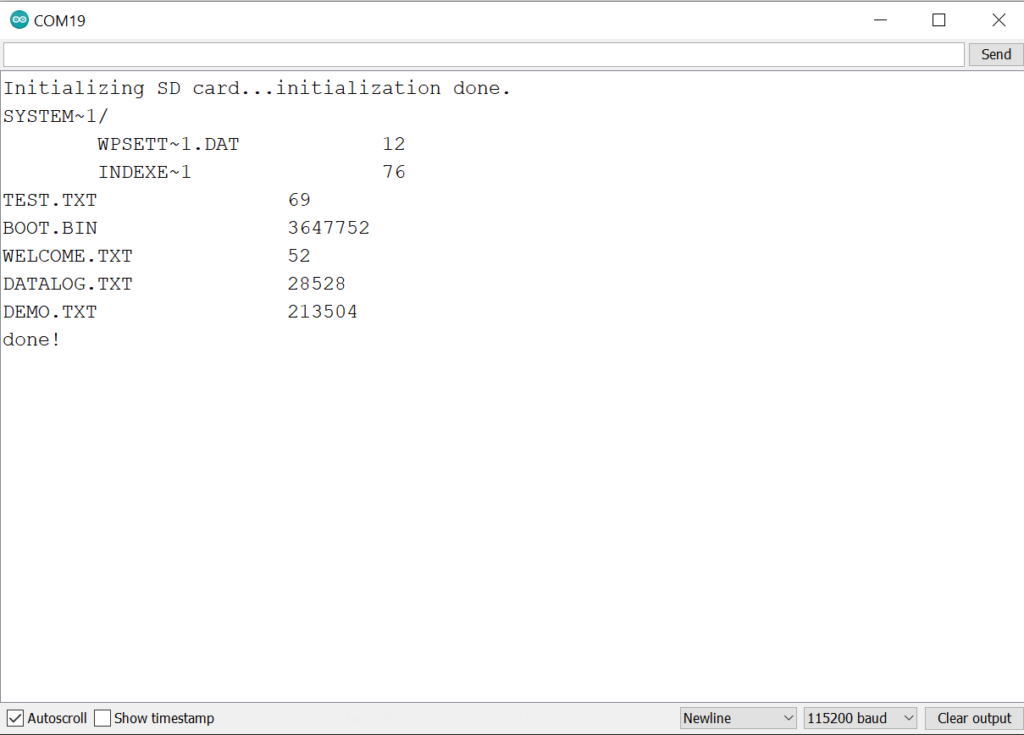
Example 6 – ReadWrite
This example provides instructions on how to both read and write data to and from a file on an SD card.
